
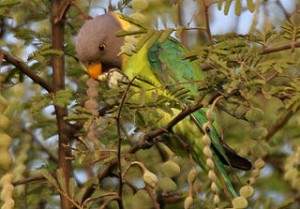
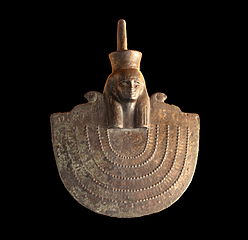
In historical times Neith gained prominence as her city Sais rose in influence during the seventh century BCE, but Neith was probably worshiped in Lower Egypt long before dynasties or agriculture, when people still hunted for food. The crossed arrows on her crown probably originated as a hunting emblem, and may also relate to the defensive stinger of the bee and the defensive thorns on the acacia. Primarily Neith is a goddess of sustenance, engaged in the perpetual creation of life. Out of just one tree she created incense, perfume, wood for implements, seedpods for cattle, pigment binder for ink and paint, materials for embalming and food for bees, not to mention welcome shade in a hot dry climate.SourcesBarrett, Clive. The Egyptian Gods and Goddesses: The mythology and beliefs of ancient Egypt. London: Diamond Books, 1996.Clark, R.T. Rundle. Myth and Symbol in Ancient Egypt. London: Thames and Hudson, 1959.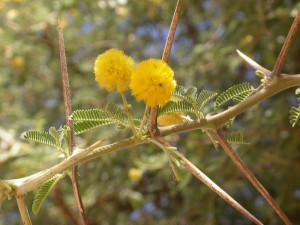
Review ~ Grandmother Moon: Lunar Magic in Our Lives, by Zsuzsanna E. Budapest
October 12, 2012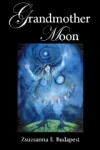 Grandmother Moon recently became available again through Amazon Createspace. The book is a collection of goddess lore based on the lunar calendar, a wheel corresponding to the zodiac sign for each lunation. There are thirteen sections or “lunations,” each starting with basic information about the moon followed by a contemplation about a goddess associated with this moon energy. There is information about the emotional side of the moon, auspicious activities, a few spells, and descriptions of lunar holidays. The lunar holidays are usually not European but Middle Eastern, Chinese, East Indian, Native American or Mesoamerican. Z explains, “This was my intention because these cultures have preserved their lunar calendars to this day.”Looking at the section for the upcoming new moon in Libra, October 13–15, Grandmother Moon categorizes it as the “Blood Moon.” Its herb is oatstraw and its animal is the cat. The goddess is the Egyptian overseer of truth and justice, Maat — not surprising since the symbol for Libra is the scale. This is a good time to fall in love and to decorate the home, and the energies of pleasure dominate. In keeping with this, Z offers a spell for physical pleasure. The festivals for this moon highlight the difficulties of incorporating an array of lunar calendars in a solar framework. The Jewish festival of Rosh Hashanah occurred at the last new moon and the Hindu festival of Diwali will occur next month. The full moon festivals occurred the end of September. We’ll have to look ahead to the Mourning Moon on October 29th and the festival of Oschophoria, when the full moon in Taurus will celebrate the ecstatic Greek God of the grapes, Dionysus. Sounds like a wonderful time for a party.Grandmother Moon is easy to pick up and put away, skim through and read out of order. It seems tailor-made for busy schedules and short attention spans. It has an index, which is helpful. The rituals, which appropriately focus on the emotions, can be done solo. It’s a great book for developing an understanding of moon energies.
Grandmother Moon recently became available again through Amazon Createspace. The book is a collection of goddess lore based on the lunar calendar, a wheel corresponding to the zodiac sign for each lunation. There are thirteen sections or “lunations,” each starting with basic information about the moon followed by a contemplation about a goddess associated with this moon energy. There is information about the emotional side of the moon, auspicious activities, a few spells, and descriptions of lunar holidays. The lunar holidays are usually not European but Middle Eastern, Chinese, East Indian, Native American or Mesoamerican. Z explains, “This was my intention because these cultures have preserved their lunar calendars to this day.”Looking at the section for the upcoming new moon in Libra, October 13–15, Grandmother Moon categorizes it as the “Blood Moon.” Its herb is oatstraw and its animal is the cat. The goddess is the Egyptian overseer of truth and justice, Maat — not surprising since the symbol for Libra is the scale. This is a good time to fall in love and to decorate the home, and the energies of pleasure dominate. In keeping with this, Z offers a spell for physical pleasure. The festivals for this moon highlight the difficulties of incorporating an array of lunar calendars in a solar framework. The Jewish festival of Rosh Hashanah occurred at the last new moon and the Hindu festival of Diwali will occur next month. The full moon festivals occurred the end of September. We’ll have to look ahead to the Mourning Moon on October 29th and the festival of Oschophoria, when the full moon in Taurus will celebrate the ecstatic Greek God of the grapes, Dionysus. Sounds like a wonderful time for a party.Grandmother Moon is easy to pick up and put away, skim through and read out of order. It seems tailor-made for busy schedules and short attention spans. It has an index, which is helpful. The rituals, which appropriately focus on the emotions, can be done solo. It’s a great book for developing an understanding of moon energies.
Moving & Changing: A Tree Collage
October 4, 2012The Hard Side of Aphrodite
October 4, 2012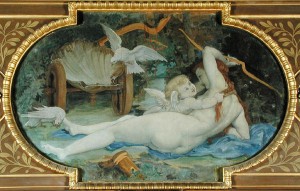
Aphrodite and the Myrtle Tree
September 28, 2012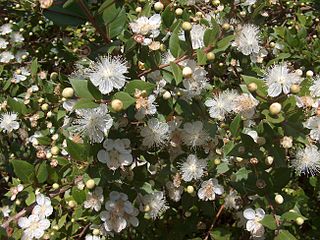

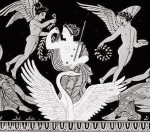
The Sacred Fruit of Persephone
September 21, 2012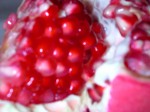 The autumn equinox coincides with the start of the major ceremonies of the Eleusinian mysteries. These ceremonies, which in Greco-Roman times attracted a huge number of attendees from all over the Mediterranean, guide participants into a deeper understanding of Persephone’s descent into the underworld. There are several versions of the myth of Persephone, which is too long to explain in detail here. The gist of it is that Persephone as a maiden goddess or “Kore” is painting flowers in a meadow when the earth opens up and the death god Hades abducts her. He demands that she stay in the underworld with him as his wife and queen and refuses to let her leave. Persephone’s mother Demeter is inconsolable and neglects her duties as mother of vegetation, leaving crops to wither from lack of rain. As the earth becomes more and more parched, the gods become alarmed, and finally the chief god Zeus orders Hades to relinquish his captive. Unfortunately Persephone has eaten a pomegranate seed while in the underworld, and the laws there decree that no one who takes food in the land of the dead may return to the living. Given the urgency of the situation, a compromise is nevertheless reached: Persephone will spend four months of every year in the underworld with Hades and will spend the rest of her time on earth with her mother Demeter. From Apollodorus:
The autumn equinox coincides with the start of the major ceremonies of the Eleusinian mysteries. These ceremonies, which in Greco-Roman times attracted a huge number of attendees from all over the Mediterranean, guide participants into a deeper understanding of Persephone’s descent into the underworld. There are several versions of the myth of Persephone, which is too long to explain in detail here. The gist of it is that Persephone as a maiden goddess or “Kore” is painting flowers in a meadow when the earth opens up and the death god Hades abducts her. He demands that she stay in the underworld with him as his wife and queen and refuses to let her leave. Persephone’s mother Demeter is inconsolable and neglects her duties as mother of vegetation, leaving crops to wither from lack of rain. As the earth becomes more and more parched, the gods become alarmed, and finally the chief god Zeus orders Hades to relinquish his captive. Unfortunately Persephone has eaten a pomegranate seed while in the underworld, and the laws there decree that no one who takes food in the land of the dead may return to the living. Given the urgency of the situation, a compromise is nevertheless reached: Persephone will spend four months of every year in the underworld with Hades and will spend the rest of her time on earth with her mother Demeter. From Apollodorus: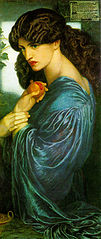
When Zeus commanded Pluto [Hades] to send Core [Kore] back up, Pluto gave her a pomegranate seed to eat, as assurance that she would not remain long with her mother. With no foreknowledge of the outcome of her act, she consumed it… Persephone was obliged to spend a third of each year with Pluto, and the remainder of the year among the gods.
Persephone’s return to the upper world in February coincides with the lesser ceremonies of Eleusis.In addition to explaining the fallow period of the agricultural year, Persephone’s myth is believed to be an account of the merger of the Hellenic (Indo-European) pantheon with a much older one. The rape motif in the story underscores that the Hellenic takeover was a violent one that wrested power from women. In the words of Robert Graves, “It refers to male usurpation of the female agricultural mysteries in primitive times.”The pre-patriarchal Persephone was probably a triple goddess, with the maiden Kore her manifestation in early spring, the mother Demeter her mature aspect, and the queen of the underworld her death aspect. Note that Mediterranean goddesses were rarely depicted as hags or crones, even in their death aspect.Persephone’s symbols are many, but we are confining our attention here to the pomegranate. This tree, which is native to Afghanistan and surrounding regions, has been cultivated for at least 5000 years. It is probable that the fruit was traded even earlier, since pomegranates keep well and their flavor is enhanced during storage. Pomegranate trees grow easily from seed. They thrive in hot, semi-arid conditions, even in poor soil. After the pomegranate flowers, the burgeoning fruit has a pronounced crown. The fleshy red seeds are sectioned by membranes that are cavernous in appearance. The cave is a symbol of both the underworld and the womb. Red is the color of blood, the womb, and birth. Many ancient people in the Mediterranean and elsewhere painted dead bodies with the red mineral ocher to symbolize rebirth. Of course, seeds also symbolize birth, and the plethora of seeds inside the pomegranate make it an emblem of fertility.Provocative symbolism aside, the pomegranate is a useful fruit. The seeds have a pleasant, astringent taste that is not overly sweet. The seeds have long been used to treat tapeworms, and the rind can sooth irritated skin. The rind is also used to dye cloth yellow. The sacred trees of major goddesses usually have a long history of generosity to humans.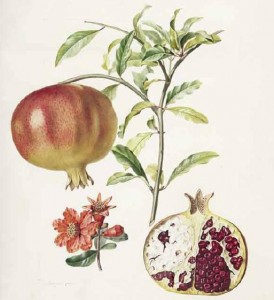
The Broom is Married to the House
September 14, 2012 In pagan imagery, the broom is not just a symbol of witches, but of wives. The Celtic goddess Brigid has among her many functions the charge of housekeeping, and her followers report that they often see her with broom in hand. Women used to leave their broom outside the front door when they left the house, as a signal to visitors that they were not at home. The ordinary broom used for household chores, as opposed to the witch’s ritual broom, is married to the house; when a family moves it is customary for the broom to remain at the house rather than being brought along to the new location.Many people are familiar with the phrase “to jump the broom,” which means to get married, and this custom relates to the broom as symbol of housekeeping and mature womanhood. The custom of jumping the broom was common on the American frontier when ordained ministers were scarce. A couple might be awaiting their second child before their marriage became official within their church, and the broom served to sanction their union until then. Broomstick weddings were also common among African American slaves, who were denied “real” marriage by slaveholders and Christian authorities. The association of brooms and marriage has antecedents in so many cultures that it is impossible to trace the origin of the custom, other than to say that it almost certainly did not originate in America.In many pagan weddings today, it is the jumping of the broom, rather than the exchange of rings or the words “I do,” that is the core part of the ceremony. The couple, holding hands or with hands fastened by ribbons, jumps over a broom lying horizontal on the ground. While in the air the spirits of the couple become joined, and when they hit the ground that union becomes sealed in the physical world. Superstitions about broom handles touching the ground suggest that in the older ceremonies the jumping broom might have been elevated or propped against something.
In pagan imagery, the broom is not just a symbol of witches, but of wives. The Celtic goddess Brigid has among her many functions the charge of housekeeping, and her followers report that they often see her with broom in hand. Women used to leave their broom outside the front door when they left the house, as a signal to visitors that they were not at home. The ordinary broom used for household chores, as opposed to the witch’s ritual broom, is married to the house; when a family moves it is customary for the broom to remain at the house rather than being brought along to the new location.Many people are familiar with the phrase “to jump the broom,” which means to get married, and this custom relates to the broom as symbol of housekeeping and mature womanhood. The custom of jumping the broom was common on the American frontier when ordained ministers were scarce. A couple might be awaiting their second child before their marriage became official within their church, and the broom served to sanction their union until then. Broomstick weddings were also common among African American slaves, who were denied “real” marriage by slaveholders and Christian authorities. The association of brooms and marriage has antecedents in so many cultures that it is impossible to trace the origin of the custom, other than to say that it almost certainly did not originate in America.In many pagan weddings today, it is the jumping of the broom, rather than the exchange of rings or the words “I do,” that is the core part of the ceremony. The couple, holding hands or with hands fastened by ribbons, jumps over a broom lying horizontal on the ground. While in the air the spirits of the couple become joined, and when they hit the ground that union becomes sealed in the physical world. Superstitions about broom handles touching the ground suggest that in the older ceremonies the jumping broom might have been elevated or propped against something.
Frigga and the Birch
September 7, 2012

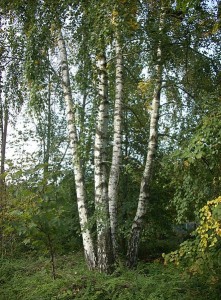

It’s all in how you see it
August 30, 2012 The internets have been in a titter for a week, and no doubt every Blue Moon café, restaurant and tavern is in high celebratory mode. Really, the significance of the Blue Moon is that it is hard to categorize. Solar and lunar time only reconcile about every nineteen years, so there are twelve lunar cycles and some change in any solar year. Whether there are twelve or thirteen full moons depends on which day you start the calendar. Depending on the tradition (and the latitude), we label each month’s moon according to its seasonal significance. Thus the January moon is the “Wolf Moon”, the February moon is the “Hungry Moon,” the March moon is the “Storm Moon,” etc. What happens when you have two full moons in a month? You don’t know how to categorize the second one. It’s also an uncommon occurrence, occurring only about every three years.A Blue Moon is a full moon in which you do something you wouldn’t ordinarily do, and something that you probably won’t do again for awhile. When I had a large teaching coven, the women would circle with the men on that night, just to show that we were not categorically opposed to it (but still not willing to make it a regular occurrence).The color blue in lunar context has some significance. Red is ordinarily the color associated with the full moon (look at it closely some time), a phenomenon that was easier to see when the moon was closer to the earth. Red is a very powerful magical color, associated with the Mother and characteristic of the Dianic Tradition. White is the color of the waxing moon, associated with the Maiden, while black is the color of the Crone and the dark portion of the waning moon. Thus we have the three important magical colors of the Dianic Tradition and many others. Blue is a cooling color less frequently invoked, which nonetheless has its own important properties. If colors are invoked when casting a circle, blue is often linked with the direction of West. In shamanic traditions which are based on the number four, unlike Indo-European cultures, which are almost always based on the number three, blue is usually included as one of the four basic colors.A lot of pagans are saying that the Blue Moon has very special powers, but I disagree with this. In and of itself, the Blue Moon only has meaning if you accept the validity of the Julian calendar. How many of us do? I accept that I have to work with this calendar, to navigate the business and larger social world, but magically my calendar is marked in different time, beginning on November 1st. Other people may start their year at the winter solstice, or the spring equinox, or at some other time. What gives the Blue Moon its significance is the the permission people give themselves to loosen up, be unorthodox, try something new. This is the special energy that drives the Blue Moon.
The internets have been in a titter for a week, and no doubt every Blue Moon café, restaurant and tavern is in high celebratory mode. Really, the significance of the Blue Moon is that it is hard to categorize. Solar and lunar time only reconcile about every nineteen years, so there are twelve lunar cycles and some change in any solar year. Whether there are twelve or thirteen full moons depends on which day you start the calendar. Depending on the tradition (and the latitude), we label each month’s moon according to its seasonal significance. Thus the January moon is the “Wolf Moon”, the February moon is the “Hungry Moon,” the March moon is the “Storm Moon,” etc. What happens when you have two full moons in a month? You don’t know how to categorize the second one. It’s also an uncommon occurrence, occurring only about every three years.A Blue Moon is a full moon in which you do something you wouldn’t ordinarily do, and something that you probably won’t do again for awhile. When I had a large teaching coven, the women would circle with the men on that night, just to show that we were not categorically opposed to it (but still not willing to make it a regular occurrence).The color blue in lunar context has some significance. Red is ordinarily the color associated with the full moon (look at it closely some time), a phenomenon that was easier to see when the moon was closer to the earth. Red is a very powerful magical color, associated with the Mother and characteristic of the Dianic Tradition. White is the color of the waxing moon, associated with the Maiden, while black is the color of the Crone and the dark portion of the waning moon. Thus we have the three important magical colors of the Dianic Tradition and many others. Blue is a cooling color less frequently invoked, which nonetheless has its own important properties. If colors are invoked when casting a circle, blue is often linked with the direction of West. In shamanic traditions which are based on the number four, unlike Indo-European cultures, which are almost always based on the number three, blue is usually included as one of the four basic colors.A lot of pagans are saying that the Blue Moon has very special powers, but I disagree with this. In and of itself, the Blue Moon only has meaning if you accept the validity of the Julian calendar. How many of us do? I accept that I have to work with this calendar, to navigate the business and larger social world, but magically my calendar is marked in different time, beginning on November 1st. Other people may start their year at the winter solstice, or the spring equinox, or at some other time. What gives the Blue Moon its significance is the the permission people give themselves to loosen up, be unorthodox, try something new. This is the special energy that drives the Blue Moon.
